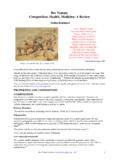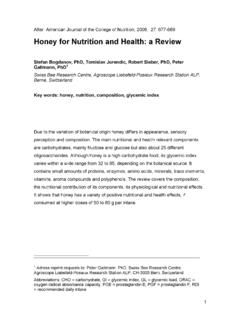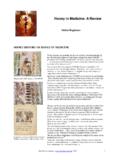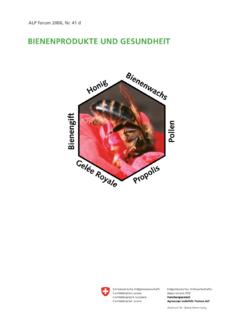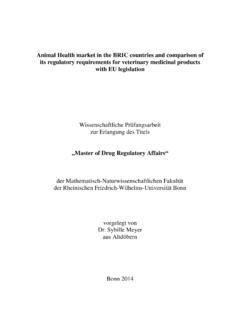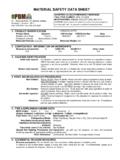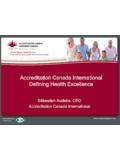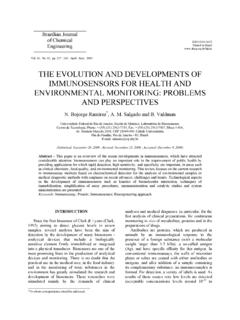Transcription of Pollen: Production, Nutrition and Health: A Review
1 pollen : production , Nutrition and health : A Review Stefan Bogdanov The Life Giving Dust tiger lilly pollen , courtesy The old Egyptians describe pollen as "a life-giving dust." pollen and its nutritional value is still surrounded by mysteries. It is called the only perfectly complete food. The consumption of plant producing seed, the pollen , is praised in the Bible, Genesis 1:29: And God said, See, I have given you every plant producing seed, on the face of all the earth, and every tree which has fruit producing seed: they will be for your food. The earliest references found to its medical uses are in books by Arab and Jewish physisicans in Islamic Spain, although pollen may not have been bee collected.
2 Maimoides (1135-1204) a physician in Cordoba, recommended its use as an astringent and sedative tonic. In the early 1200's Ibn el-Beithar described it as aphrodiasiac, also beneficial for the stomach, giving back the fervour of the blood and curing swellings produced by eating certain foods36. In new times bee collected pollen began to be used for human Nutrition only after the second world war, when pollen traps were developed. In this Review it will be distinguished between the effects of bee pollen and of hand collected pollen which will be named flower pollen . OPTIMAL production . Fresh, bee collected pollen contains about 20-30 g water per 100 g. This high humidity is an ideal culture medium for micro-organisms like bacteria and yeast.
3 For prevention of spoilage and for preservation of a maximum quality the pollen has to be harvested daily and immediately placed in a freezer. After two days of storage in the freezer, the pest insects will be killed114 After thawing pollen can be kept only for a few hours and should be further processed as soon as possible. Drying The pollen is best dried in an electric oven, where humidity can continuously escape. Then it is purified by a special machine, similar to a seed cleaning machine. The maximum temperature is 30 C and the drying time should be as short as possible in order to avoid vitamin losses. Fresh, bee collected pollen contains about 20-30 g water per 100 g.
4 This high humidity is an ideal culture medium for micro-organisms like bacteria and yeast. For prevention of spoilage and for preservation of a maximum quality the pollen has to be harvested daily and immediately placed in a freezer. After thawing pollen can be kept only for a few hours and should be further processed as soon as possible. After drying the water content should be 6 g water per 100 g pollen . Bee Product Science, , 2017 1. Today pollen is dried generally in electric ovens, where humidity can continuously escape. The prescribed maximum temperature was 40 C. However this temperature seems to be high. The effect of different methods of preservation (freezing, drying at about 40 C and lyophilisation) on selected parameters attributed to the biological quality of bee pollen were tested in Poland.
5 Freezing caused no substantial changes in the chemical composition of the pollen loads, so this technique should be recommended when the preservation of the pollen load for Nutrition or therapeutic purposes is important. Lyophilisation markedly decreased vitamin C and provitamin A content, but drying at 40 C revealed the most disadvantageous effect 171. A Brazilian study found that pollen drying for 6 hours at 45 C led to significant losses of vitamin E and - carotene, as well as pro-vitamin A by 15 to 25 % 38. A Spanish study showed that freeze drying is better for the preservation of the chemical and the biological properties of pollen than oven-dried one41. A Portuguese study revealed that quick drying of bee pollen (3 times for 45 seconds) at 50o C in an infra-red oven did not lead to losses of anti-oxidant activity Concluding the above results, pollen should be dried at possible low temperatures, a maximum of 30 C.
6 The better alternative is to use freeze drying. A pollen freeze drying machine is described in the literature 55 , but its effect on pollen quality has not been tested. Storage Experience in Switzerland showed that from a microbiological and sensory point of view pollen remains stable until years of storage at room temperature. Under these conditions pollen keeps its sensory and microbiological quality for a storage period of 2 years, if stored in a cool, dry and dark place 15. As a functional food one of the main health enhancing properties is the strong antioxidant activity of pollen . pollen loses a considerable amount of its antioxidant activity (about 59%) after one year26.
7 This loss might be due to the decrease of phenolic compounds, observed in another study150. The amounts of four out of nine constituents examined (reducing sugars, total proteins, vitamin C, and provitamin A) markedly decreased upon storage. Taking into account the methods of production practical recommendations for the means of preservation and optimum conditions for the storage of pollen loads are suggested. Freezing followed by storage at -20 C in pure nitrogen guarantees high biological qualities of bee pollen kept for up to 6. months. pollen stored for a longer periods should, however, be dried by lyophilisation and stored at -20 C in pure nitrogen to preserve its highest biological activities.
8 Storage of pollen at 0 to 10 degrees in vacuum has been proposed in order to prevent antioxidant spoilage 166. A Brazilian study found no loss of vitamin C and losses of vitamine E and beta-carotenes by 15 to 20 % upon storage of dry pollen for one year at room temperature 39. Fresh, frozen purified pollen should be stored under nitrogen until consumption for preservation of optimal biological and nutritive properties 132. Harvesting of unifloral pollen Normally beekeepers collect mixed pollen . Harvesting of unifloral pollen is important because only this type of pollen has constant composition and thus can be successfully used in Nutrition and medicine. A machine was constructed in Austria, by the help of which bee pollen can be sorted into different types, the purity of the sorted pollen being about 90 %144.
9 Fresh freeze-dried pollen Patrice Percie du Sert from France invented and patented a technique in 1994. that allows all the nutrients in fresh bee pollen to be preserved. The pollen is frozen at collection and packed in a nitrogen filled package; oxygen is excluded, eliminating decay. This process allows the pollen to be presented as close to its pure state as possible. Fresh, purified pollen can be frozen and stored under nitrogen until consumption for preservation of optimal biological and nutritive properties132. Bee Product Science, , 2017 2. Bee bread Bees store pollen in the hive as beebread. pollen is mixed with honey and bee secretions and stored in the combs.
10 Bee bread undergoes a lactic acid fermentation and can be thus preserved. Beebread combs will often be sold as a whole. For that purpose a bee queen separator is placed between brood and honey combs during a period of a maximum pollen gathering activity. When the combs are full, the pollen is harvested by means of a scraper and filled into a jar. production of home bee bread after Dany 1988, as described by Krell95. The term bee bread is reserved for the original bee pollen stored in the combs. Thus, the product described below cannot be called home bee bread or fermented pollen . Normally, the term beebread refers to the pollen stored by the bees in their combs.
